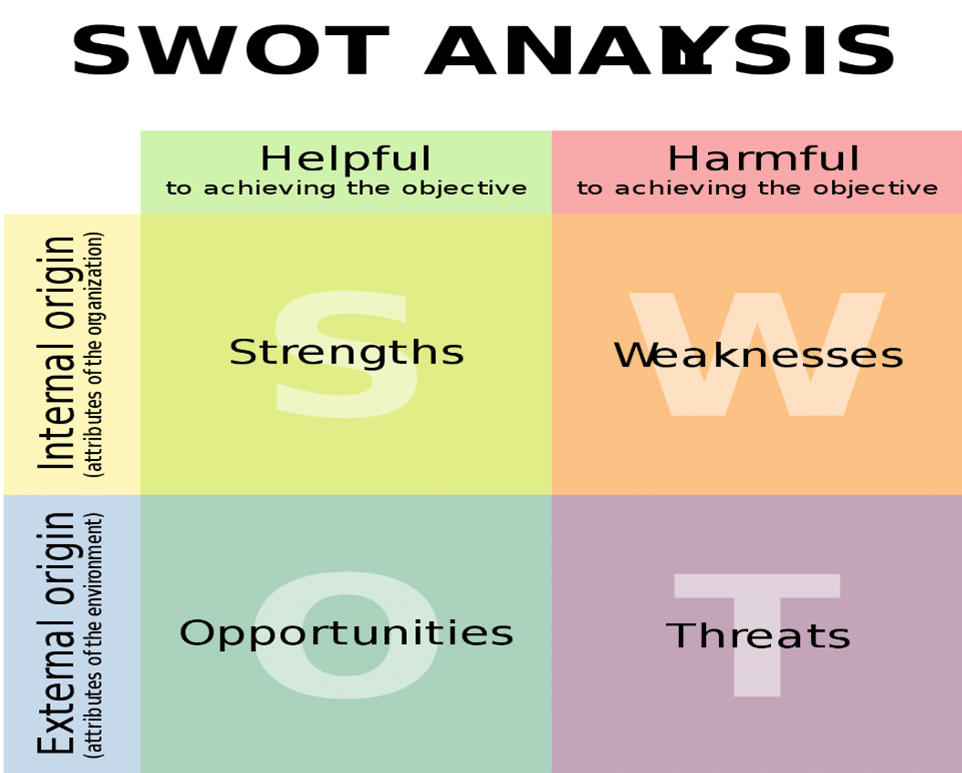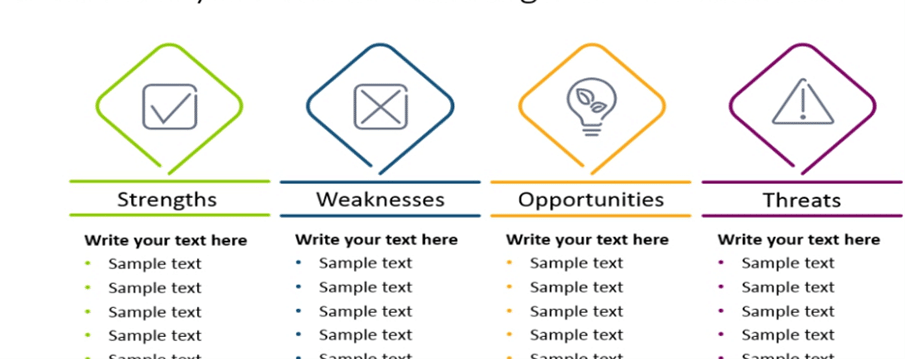Businesses use various tools to help them understand their relative position in the market. The Strengths, Weaknesses, Opportunities, and Threats (or SWOT) analysis is one such tool that matches the company's resources and capabilities to their industry.
Through the use of a SWOT analysis, the company can gauge internal factors. These can be strengths and weaknesses, while external factors may include opportunities or threats to the business.
Once these factors have been identified, companies can then present this SWOT analysis through a presentation.
An effective SWOT analysis presentation can influence stakeholders' decisions or the actions they may take. For this reason, it is not enough to identify an organization's strengths, weaknesses, opportunities, and threats. It is equally important to present them in a manner that is clear, concise, and relevant to its audience.
The following are what to keep in mind when making the ideal SWOT analysis presentation:
1. The Objective of the SWOT Analysis
The presenter should first explain why they made a SWOT analysis. That explanation must include factors taken into consideration when they made the analysis, as well as how the results can be used as leverage for the company.
The presenter should also define the strengths, weaknesses, opportunities, and threats they have found while conducting their analysis.
As a rule, strengths must pertain to factors that can currently give the business leverage, and what the business can do to optimize them. Weaknesses should be factors that can lower the organization's competitiveness, and what they can do to address these weaknesses.
Opportunities are factors that can help the business grow, such as positive changes in government regulations or new markets. Threats, on the other hand, are factors that may challenge the organization's competitiveness or its current market share.

2. The Audience for the SWOT Analysis Presentation
The audience of a SWOT analysis presentation can determine the language to be used and the information that will be highlighted.
For example, if the SWOT analysis presentation was created for current or potential investors, they will likely need several statistics and figures to supplement the data presented. They may need concrete examples as well as solid research. If one of the strengths identified is about the business' good reputation, an actual customer evaluation can back this claim. As much as possible, each factor should tie back to profitability as investors are normally concerned about this point.
The emphasis of a SWOT analysis presentation may differ depending on the audience. But what is more important is for the presentation to show the interconnectedness of the strengths, weaknesses, opportunities, and threats identified as no business operates in a vacuum. Each of these elements is contextually relevant to the other.
3. Presenting Key Findings in a Matrix
The matrix form will provide readers with a quick and easy way to identify strengths, weaknesses, opportunities, and threats. The 2×2 matrix can visually present the key findings of each aspect of the analysis. In relaying the results in this way, decision-makers see which findings need to be prioritized as they are ranked from highest to the lowest on the presentation.

Priority will depend on several factors such as the overall impact on the organization and the resources available. Since the presentation is in matrix form, the factors should not be more than six to eight. Too many points could distract the readers and shift their attention away from the most important issues.
The SWOT matrix, however, is not enough. There is a need to provide details of each key point during the presentation. This is to avoid confusion, omissions, or mistakes. For each key point, there should be evidence to prove their significance as well as logical explanations on why these points made it to the list. The presenter should also explain the priority assigned to each point.
In discussing each point, the presenter should focus on why each point is significant to the organization's goals or objectives.
4. Starting Strong
The presenter should first talk about the strengths and weaknesses followed by the opportunities and threats. The negative aspects unearthed in a SWOT analysis are bound to elicit reactions and may even become controversial.
It is recommended to guide any discussion of possible threats to the organization until the last part of the presentation and anticipate a lot of questions. The presenter should be equipped with data and evidence to back up points presented, especially if they’re on the controversial side. When facts are presented, these can help validate the findings.

5. Making a Slide Presentation
In expounding each key finding, use bullet points that follow the 5×7 rule. This means that there should only be a maximum of five points presented per slide where each point has a maximum of seven words. Avoid lengthy descriptions on the slides as this can make the viewers shift from listening to the speaker to reading the texts on the slides.
To keep people's attention, there should be a proper balance between the use of texts and graphics. Data visualization can help the audience understand points better. Each slide can use colors, graphics, or charts to emphasize certain points. But in each one, graphics should not affect the readability and clarity of points.
An alternative to bullet points is the diamond list diagram shown below.

For each slide, the presenter should spend at least one minute to discuss the salient points or provide additional information. If the presenter spends less than one minute on a slide, it will make the presentation appear rushed. The presenter, however, should not spend too much time on each slide as this can unnecessarily drag the presentation.
Prior to the presentation, the presenter should do a test run of the entire presentation to determine the pacing and make adjustments as needed.
If the entire presentation takes longer than 30 minutes, it needs to be segmented to prevent the audience's attention from straying. For instance, after discussing the key findings for the organization's strengths, the presenter can take a five to 10-minute break to answer questions. Each segment needs an equal amount of time to prevent the audience from thinking that longer segments are more important than shorter ones.
6. Call to Action
A SWOT analysis is a great tool to help businesses find areas to expand and improve. As such, the presentation should end with a call to action. In this Call to Action, the presenter can identify what the audience needs to do next to make the most out of the information presented.
One call to action that the presenter can ask of the audience is to provide feedback about the presentation. Alternatively, they can ask them to raise additional factors that they believe should be included in the analysis.









